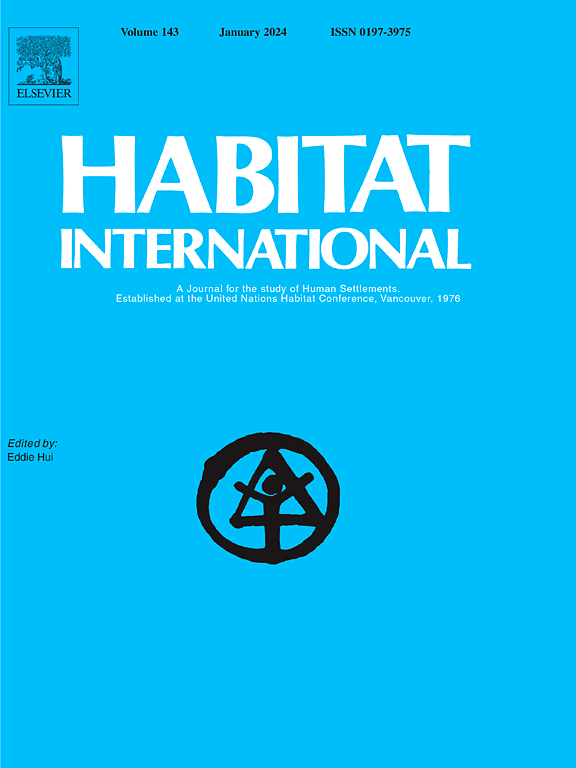Age-friendly spatial design for residential neighbourhoods in a compact city: Participatory planning with older adults and stakeholders
IF 6.5
1区 经济学
Q1 DEVELOPMENT STUDIES
引用次数: 0
Abstract
Despite worldwide concerns about ageing-in-place and age-friendly environments in cities, frameworks for age-friendly residential neighbourhoods—particularly planned housing estates dominant in Asia—remain underdeveloped. This study addressed this gap by developing a responsive, adaptable, and scale-specific framework for age-friendly spatial design of old residential neighbourhoods. We applied participatory research methods to study an old private residential neighbourhood beset by both demographic and infrastructural ageing in Hong Kong. Integrating perspectives from older residents, other age groups, and built-environment professionals, the study facilitated the co-identification of current barriers and co-prioritisation of critical design factors and strategies for age-friendly residential neighbourhoods. Two main factors emerged: Future-Proofing Communities, focusing on adaptable spatial design and functionality, and Creating Flexible Places for All, emphasising complementary and multiple-use space for services, activities, and community support networks. The study sheds light on the dynamics of property ownership and management in residential neighbourhoods, underscoring the importance of empathy and consensus-building between management and residents. The findings provided actionable insights for governments, urban planners, and public and private housing suppliers and managers. We advocate extending the discourse on sustainable urban development for ageing populations, particularly in high-density and old Asian urban neighbourhoods.
紧凑型城市中老年人友好型住宅区的空间设计:老年人和利益相关者的参与式规划
尽管全世界都在关注城市老龄化和老年人友好型环境,但老年人友好型住宅区的框架——尤其是在亚洲占主导地位的规划住宅——仍然不发达。这项研究通过开发一个响应性强、适应性强、规模特定的框架来解决这一差距,为老住宅区的老年人友好空间设计提供了一个框架。我们采用参与式研究方法,对香港一个受人口老化和基础设施老化困扰的旧私人住宅社区进行研究。该研究整合了老年居民、其他年龄组和建筑环境专业人士的观点,促进了对当前障碍的共同识别,并为老年人友好型住宅社区的关键设计因素和策略制定了共同的优先顺序。出现了两个主要因素:面向未来的社区,注重适应性空间设计和功能,以及为所有人创造灵活的场所,强调服务、活动和社区支持网络的互补和多用途空间。该研究揭示了住宅小区财产所有权和管理的动态,强调了管理和居民之间的同理心和建立共识的重要性。研究结果为政府、城市规划者、公共和私人住房供应商和管理者提供了可行的见解。我们主张扩大针对老龄化人口的可持续城市发展的讨论,特别是在人口密集和老亚洲城市社区。
本文章由计算机程序翻译,如有差异,请以英文原文为准。
求助全文
约1分钟内获得全文
求助全文
来源期刊

Habitat International
Multiple-
CiteScore
10.50
自引率
10.30%
发文量
151
审稿时长
38 days
期刊介绍:
Habitat International is dedicated to the study of urban and rural human settlements: their planning, design, production and management. Its main focus is on urbanisation in its broadest sense in the developing world. However, increasingly the interrelationships and linkages between cities and towns in the developing and developed worlds are becoming apparent and solutions to the problems that result are urgently required. The economic, social, technological and political systems of the world are intertwined and changes in one region almost always affect other regions.
 求助内容:
求助内容: 应助结果提醒方式:
应助结果提醒方式:


